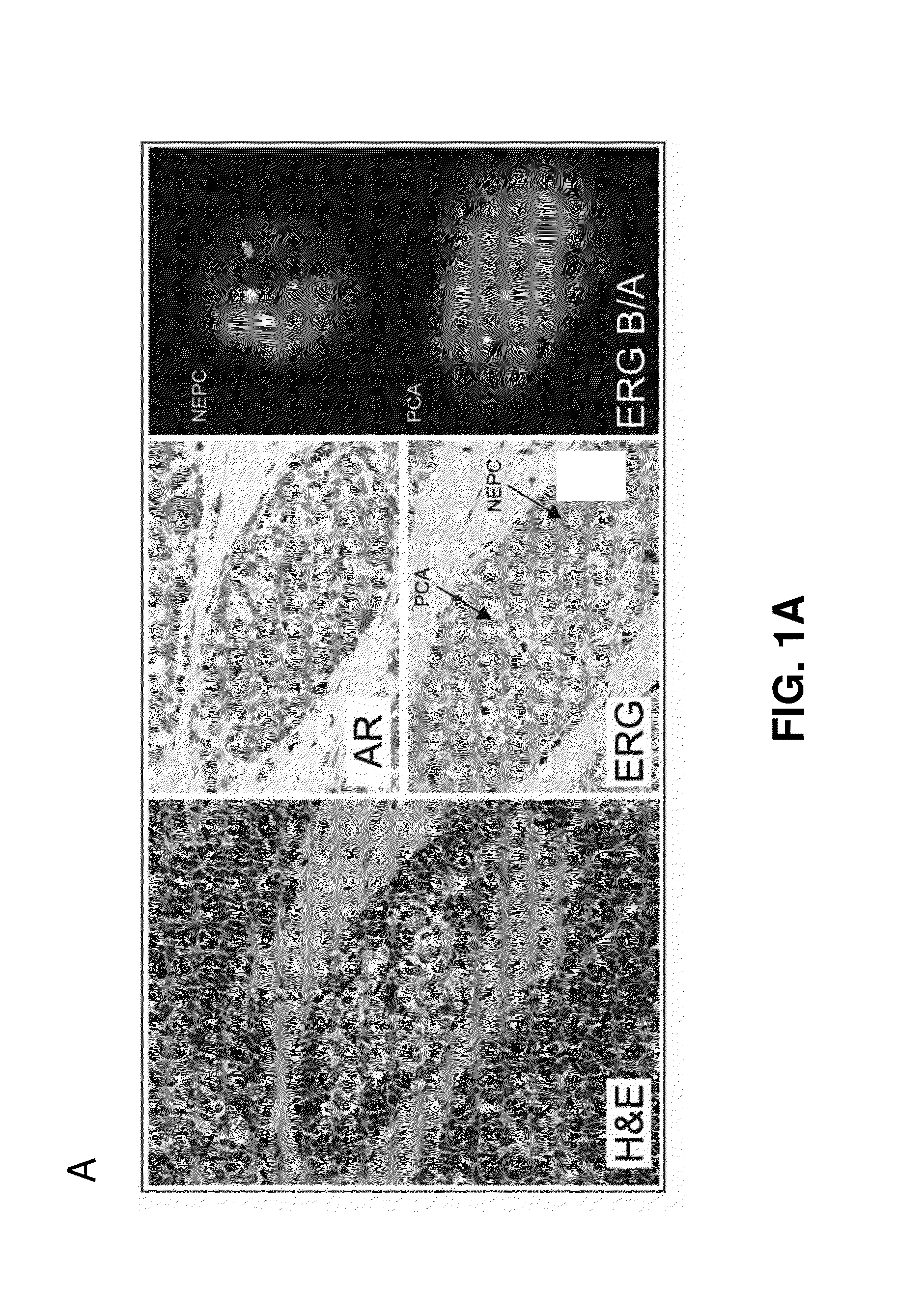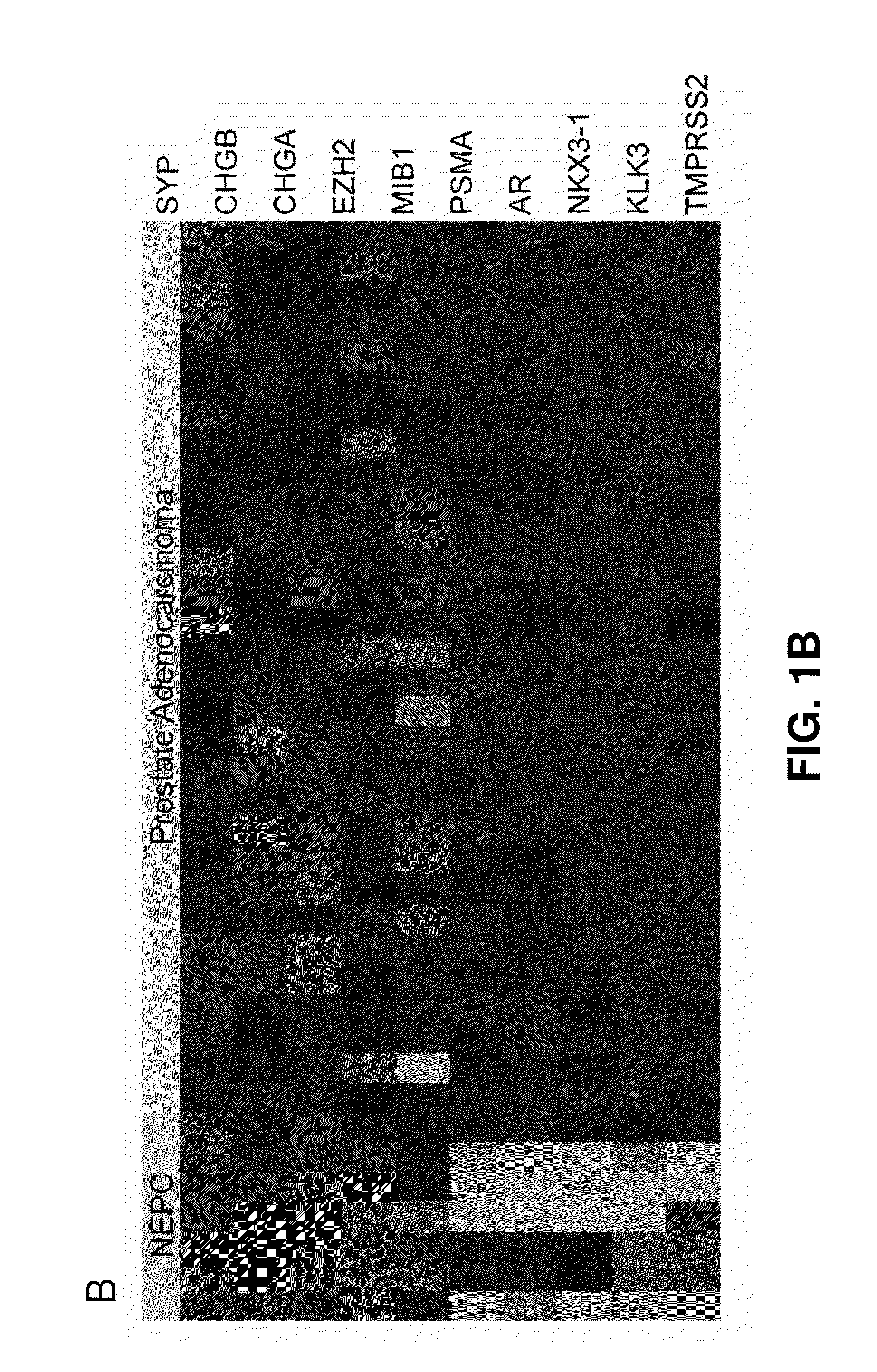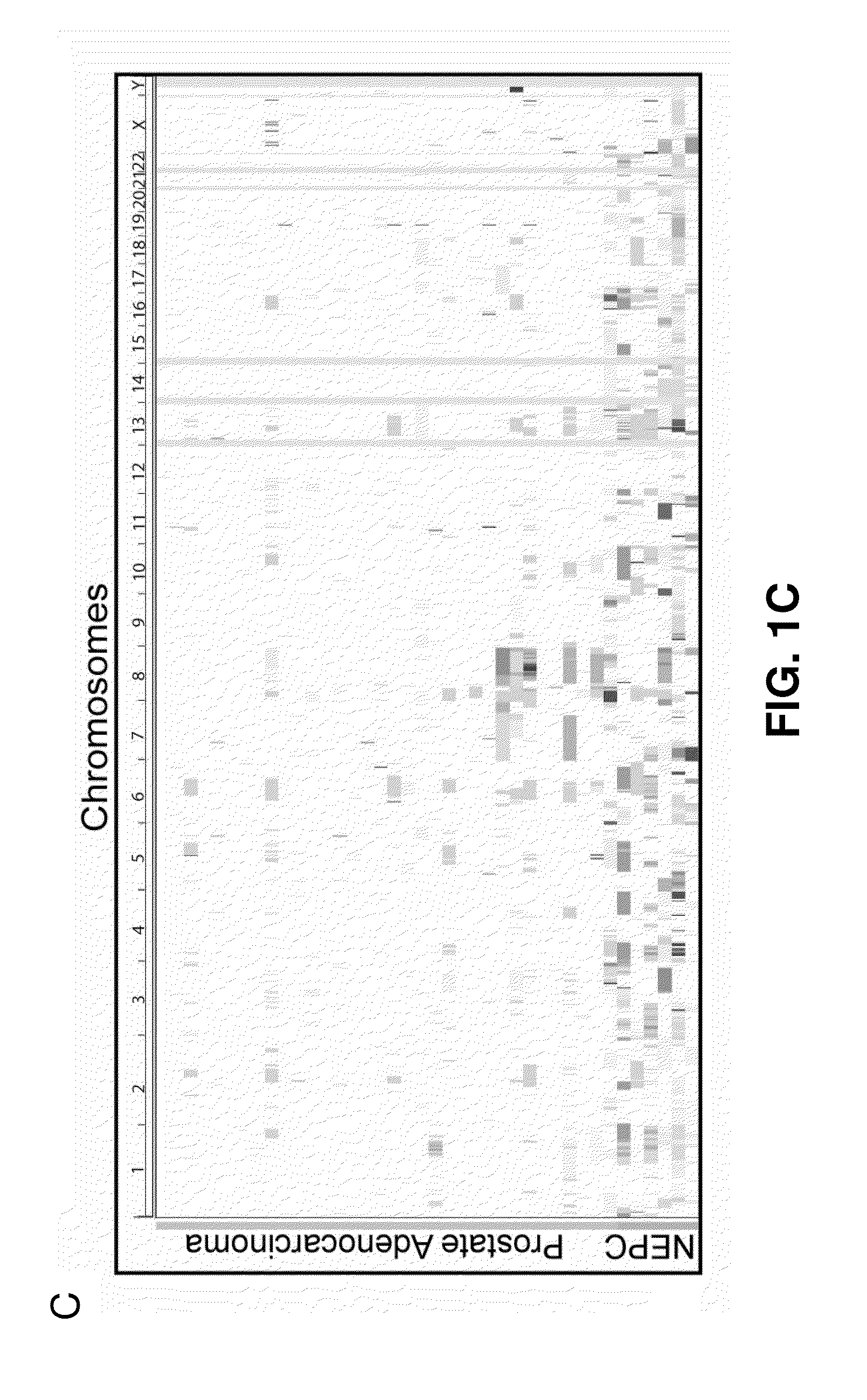Molecular subtyping, prognosis and treatment of prostate cancer
a prostate cancer and molecular subtype technology, applied in the field of prostate cancer prognosis and treatment, can solve the problems of poor molecular characterization of nepc, lack of disease specific therapeutics, and increased number
- Summary
- Abstract
- Description
- Claims
- Application Information
AI Technical Summary
Benefits of technology
Problems solved by technology
Method used
Image
Examples
example 1
[0060]This Example describes experiments in which 7 NEPC, 30 PCA, and 5 benign prostate tissue (BEN) were profiled by using Next Generation RNA-sequencing and oligonucleotide arrays, and the findings were validated on tumors from a large cohort of patients (37 NEPC, 169 PCA, 22 BEN) using IHC and FISH. Significant overexpression and gene amplification of AURKA and MYCN were discovered in 40% of NEPC and 5% of PCA, respectively, and it is shown herein that that they cooperate to induce a neuroendocrine phenotype in prostate cells. There was dramatic and enhanced sensitivity of NEPC (and MYCN overexpressing PCA) to Aurora kinase inhibitor therapy both in vitro and in vivo, with complete suppression of neuroendocrine marker expression following treatment.
[0061]Results
[0062]The inventors evaluated forty-five NEPC tumors, and observed a spectrum ranging from pure small cell carcinoma to tumors with mixed features of both PCA and NEPC. The TMPRSS2-ERG gene fusion was detected by Fluoresce...
example 2
[0111]In this Example, the inventors examined the histological spectrum of t-NEPC and evaluated AURKA and MYCN amplification in primary prostate tumors and metastases from 72 patients who developed lethal t-NEPC. The inventors identified three morphologic groups of t-NEPC consisting of pure neuroendocrine carcinoma, which included small cell and large cell neuroendocrine carcinoma, poorly differentiated adenocarcinoma with or without neuroendocrine differentiation, and mixed tumors. Amplification of AURKA was identified in 64% of evaluable primary PCa (treated and hormone naïve) from patients with t-NEPC, and in 92% of metastases; of these cases, 69% of primary PCa and 82% of metastases also harbored concurrent amplification of the N-myc gene (MYCN). In contrast, in an unselected PCa cohort, AURKA and MYCN amplifications were identified in only 6% of 172 cases. Interestingly, 3 / 3 cases of PCa with Paneth cell-like neuroendocrine differentiation in the unselected cohort harbored AURK...
PUM
 Login to View More
Login to View More Abstract
Description
Claims
Application Information
 Login to View More
Login to View More - R&D
- Intellectual Property
- Life Sciences
- Materials
- Tech Scout
- Unparalleled Data Quality
- Higher Quality Content
- 60% Fewer Hallucinations
Browse by: Latest US Patents, China's latest patents, Technical Efficacy Thesaurus, Application Domain, Technology Topic, Popular Technical Reports.
© 2025 PatSnap. All rights reserved.Legal|Privacy policy|Modern Slavery Act Transparency Statement|Sitemap|About US| Contact US: help@patsnap.com



